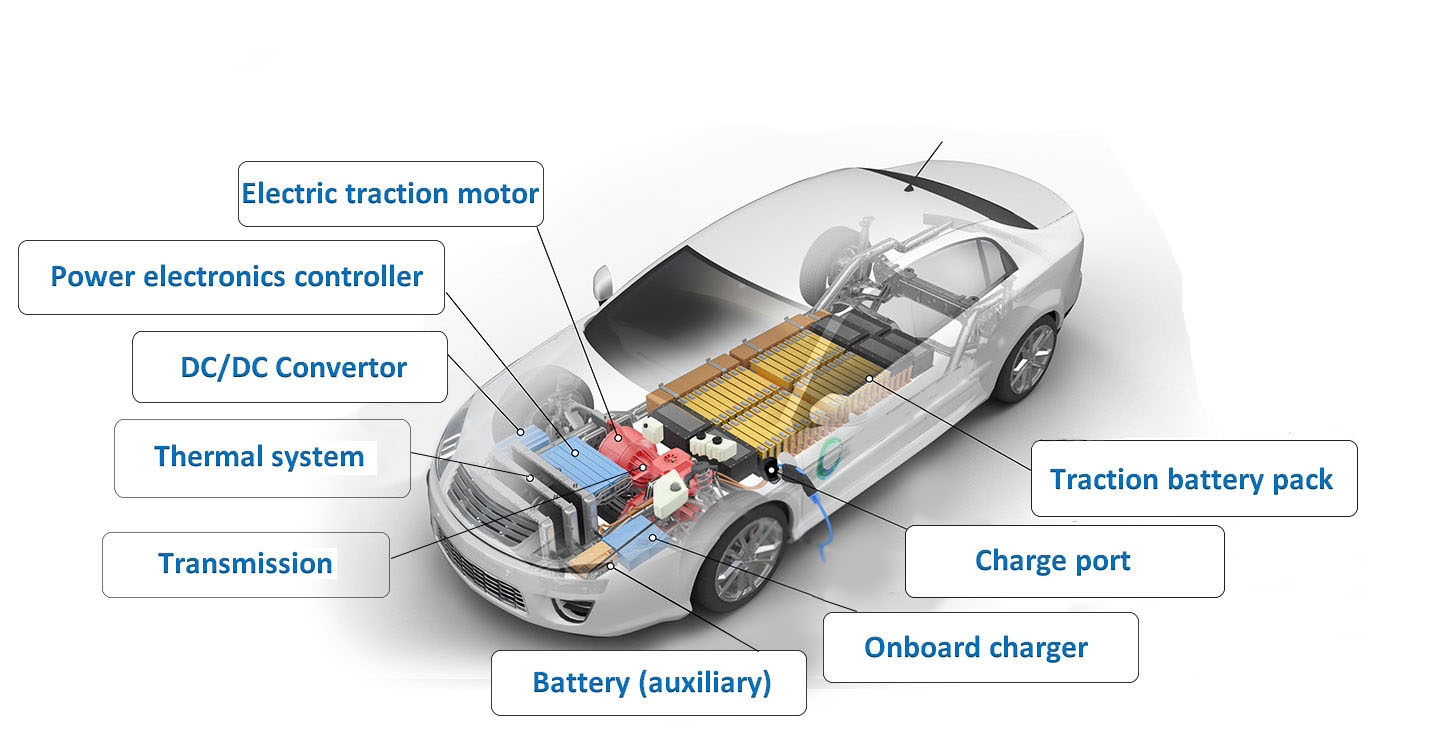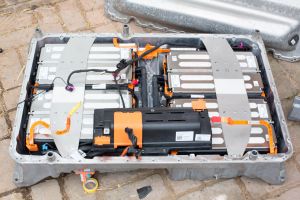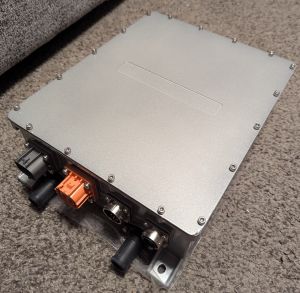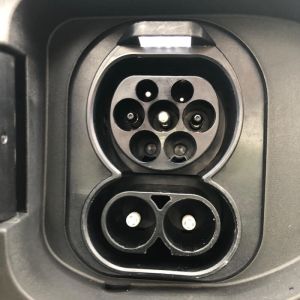Main Page: Difference between revisions
(Added miscellaneous links) |
mNo edit summary |
||
| (18 intermediate revisions by 6 users not shown) | |||
| Line 1: | Line 1: | ||
[[Index|Wiki Index]] - quick reference for all info on the wiki. | |||
Did you know you can convert your existing fossil powered vehicle to use electricity instead? And that you can even produce that electricity yourself? | Did you know you can convert your existing fossil powered vehicle to use electricity instead? And that you can even produce that electricity yourself? | ||
Open Inverter is a community of people and projects focused on open source solutions for EV conversions. Founded in 2008 by Johannes Huebner as an open source inverter control firmware, the project has since | Open Inverter is a [[Main Page#Who we are|community of people]] and projects focused on open source solutions for EV conversions. Founded in 2008 by Johannes Huebner as an open source inverter control firmware, the project has since expanded to include the reuse of components from production EVs and hybrids, including inverters, motors, batteries, on-board chargers, and DC-DC converters, as well as the open source implementation of other necessary systems for EV conversions such as DC Fast Charging controllers. | ||
<imagemap> | <imagemap> | ||
| Line 14: | Line 16: | ||
</imagemap> | </imagemap> | ||
This wiki is maintained by the wider community. '''Please update this wiki'''. For example if your question has been clarified on the [https://openinverter.org/forum forum] and the new information can not be found here, please add it! The credentials are the same as for the forum. | |||
'''[[Main Page#Who we are|Developers]] time is best spent developing;''' '''Support is best found in the forums''' - Developers of various projects are often bombarded with private messages and emails. Managing these emails and questions is a extremely large undertaking. Please read, and take the time to understand the information available here and across the web if you don't understand a topic. Developers are not your personal support team, unless you want to [[Application Support|pay them directly]] for their time. To keep developers independent please consider donating - donation links can be found [[Main Page#Who we are|down below]]. | |||
==Reusing motors and inverters - aka drive trains== | ==Reusing motors and inverters - aka drive trains== | ||
| Line 43: | Line 37: | ||
|[[:Category:Tesla|Tesla]] | |[[:Category:Tesla|Tesla]] | ||
|[[Tesla Model S/X Large Drive Unit ("LDU")|Large Drive Unit]] | |[[Tesla Model S/X Large Drive Unit ("LDU")|Large Drive Unit]] | ||
|Board Swap | |[https://openinverter.org/shop/index.php?route=product/product&path=61&product_id=64 Board Swap] | ||
|335-475 kW | |335-475 kW | ||
|- | |- | ||
| | | | ||
|[[Tesla Model S/X Small Drive Unit ("SDU")|Small Drive Unit]] | |[[Tesla Model S/X Small Drive Unit ("SDU")|Small Drive Unit]] | ||
|Board Swap | |[https://openinverter.org/shop/index.php?route=product/product&path=61&product_id=62 Board Swap] | ||
|180 kW | |180 kW | ||
|- | |- | ||
| Line 63: | Line 57: | ||
|[[Nissan]] | |[[Nissan]] | ||
|[[Nissan Leaf Motors|Gen1]] | |[[Nissan Leaf Motors|Gen1]] | ||
|[[ZombieVerter VCU|CAN spoofing]] | |[[ZombieVerter VCU|CAN spoofing with ZombieVerter VCU]] | ||
|80 kW | |80 kW | ||
|- | |- | ||
| | | | ||
| [[Nissan Leaf Gen2 Board|Gen2]] | | [[Nissan Leaf Gen2 Board|Gen2]] | ||
|[[ZombieVerter VCU|CAN spoofing]]/Board Swap | |[[ZombieVerter VCU|CAN spoofing with ZombieVerter VCU]]/[https://openinverter.org/shop/index.php?route=product/product&product_id=57 Board Swap] | ||
|80 kW / 130 kW (board swap) | |80 kW / 130 kW (board swap) | ||
|- | |- | ||
| | | | ||
|[[Nissan Leaf Gen 3 (2018 up EM57)|Gen3]] | |[[Nissan Leaf Gen 3 (2018 up EM57)|Gen3]] | ||
|[[ZombieVerter VCU|CAN spoofing]]/Board Swap [WIP] | |[[ZombieVerter VCU|CAN spoofing with ZombieVerter VCU]]/Board Swap [WIP] | ||
|110 - 160 kW | |110 - 160 kW | ||
|- | |- | ||
|[[:Category:Toyota|Toyota]] | |[[:Category:Toyota|Toyota]] | ||
|[[Lexus GS450h Drivetrain|Lexus GS 450h]] | |[[Lexus GS450h Drivetrain|Lexus GS 450h]] | ||
|[[ZombieVerter VCU|Communication spoofing]] | |[[ZombieVerter VCU|Communication spoofing with ZombieVerterVCU]] | ||
|250 kW | |250 kW | ||
|- | |- | ||
| | | | ||
|[[Toyota/Lexus GS300h CVT|Lexus GS 300h]] | |[[Toyota/Lexus GS300h CVT|Lexus GS 300h]] | ||
|[[ZombieVerter VCU|Communication spoofing]] | |[[ZombieVerter VCU|Communication spoofing with ZombieVerterVCU]] | ||
|105 kW | |105 kW | ||
|- | |- | ||
| | | | ||
|[[Toyota Prius Gen2 Inverter|Prius Gen2]] | |[[Toyota Prius Gen2 Inverter|Prius Gen2]] | ||
|[[Toyota Prius Gen2 Inverter Controller|External Control Board]] | |[[Toyota Prius Gen2 Inverter Controller|External Control Board]] ([https://openinverter.org/shop/index.php?route=product/product&product_id=68 Buy here]) | ||
|40-70 kW | |40-70 kW | ||
|- | |- | ||
| | | | ||
|[[Toyota Prius Gen3 Board|Prius Gen3]] | |[[Toyota Prius Gen3 Board|Prius Gen3]] | ||
|Board Swap/[[ZombieVerter VCU|Communication spoofing]] | |[https://evbmw.com/index.php/evbmw-webshop/toyota-built-and-tested-boards Board Swap]/[[ZombieVerter VCU|Communication spoofing with ZombieVerterVCU]] | ||
|100 kW | |100 kW | ||
|- | |- | ||
| Line 103: | Line 97: | ||
|[[:Category:Mitsubishi|Mitsubishi]] | |[[:Category:Mitsubishi|Mitsubishi]] | ||
|[[Mitsubishi Outlander Rear Drive Unit|Rear Drive Unit]] | |[[Mitsubishi Outlander Rear Drive Unit|Rear Drive Unit]] | ||
|[[ZombieVerter VCU|Communication spoofing]] | |[[ZombieVerter VCU|Communication spoofing with ZombieVerterVCU]] | ||
|60-70 kW | |60-70 kW | ||
|- | |- | ||
| | | | ||
|[[Mitsubishi Outlander Front Transaxle|Front Drive Unit]] | |[[Mitsubishi Outlander Front Transaxle|Front Drive Unit]] | ||
|[[ZombieVerter VCU|Communication spoofing]] | |[[ZombieVerter VCU|Communication spoofing with ZombieVerterVCU]] | ||
|60-70 kW | |60-70 kW | ||
|- | |- | ||
|[[:Category:BMW|BMW]] | |[[:Category:BMW|BMW]] | ||
|[[BMW i3 Inverter|i3]] | |[[BMW i3 Inverter|i3]] | ||
|Board Swap | |[https://openinverter.org/shop/index.php?route=product/product&path=61&product_id=72 Board Swap] | ||
|125-135 kW | |125-135 kW | ||
|- | |- | ||
| Line 242: | Line 236: | ||
|3.3 kW | |3.3 kW | ||
|- | |- | ||
|MG | |[[:Category:MG|MG]] | ||
|[[MG ZS Charger|ZS / MG4 / MG5]] | |[[MG ZS Charger|ZS / MG4 / MG5]] | ||
|yes | |yes | ||
| Line 252: | Line 246: | ||
== Rapid Charging== | == Rapid Charging== | ||
[[File:Ccs-socket.jpg|thumb|CCS2 rapid charging socket]] | [[File:Ccs-socket.jpg|thumb|CCS2 rapid charging socket]] | ||
The above mentioned onboard chargers always have limited power as | The above mentioned onboard chargers always have limited power as the space requirements and cost rise with power. To overcome this limitation modern EVs offer external access to their HV battery via a so called [[:Category:Rapid Charging|rapid charging]] port. This allows to charge the battery with a much more powerful external charger. As a bonus it also allows [[Bidirectional Charging|taking energy from the HV battery]] and powering appliances with it. | ||
There are 2 rapid charging protocols and 5 connector flavours world wide | There are 2 rapid charging protocols and 5 connector flavours world wide | ||
| Line 295: | Line 289: | ||
* [[Vacuum Pumps]] | * [[Vacuum Pumps]] | ||
* [[:Category:Power Steering|Power Steering]] | * [[:Category:Power Steering|Power Steering]] | ||
* [[Water Pumps]] | |||
* [[VCU Comparison|VCU]] (Vehicle Control Unit) | * [[VCU Comparison|VCU]] (Vehicle Control Unit) | ||
* [[Shift Controllers]] | * [[Shift Controllers]] | ||
* [[:Category:Charge Ports|Charge Ports]] | |||
== Additional Reading == | == Additional Reading == | ||
| Line 302: | Line 298: | ||
* [[:Category:Legalities|Legalities]] - Getting a vehicle road legal in your country | * [[:Category:Legalities|Legalities]] - Getting a vehicle road legal in your country | ||
* [[Glossary of Terms]] | * [[Glossary of Terms]] | ||
* [[Parameters|Inverter Parameter Definitions]] | |||
* [[Common Inverter FAQ]] - questions common to all hardware variants | * [[Common Inverter FAQ]] - questions common to all hardware variants | ||
* [[Tesla Inverter FAQ]] - questions regarding Tesla Large Drive Units and Small Drive Units | * [[Tesla Inverter FAQ]] - questions regarding Tesla Large Drive Units and Small Drive Units | ||
| Line 310: | Line 307: | ||
* [[:Category:OpenInverter|Documentation of all OpenInverter Projects]] | * [[:Category:OpenInverter|Documentation of all OpenInverter Projects]] | ||
* [[:Category:Tutorials|Tutorials]] | * [[:Category:Tutorials|Tutorials]] | ||
* [[Hardware Theory of Operation]] | |||
* [[Software Theory of Operation]] | |||
==Who we are== | ==Who we are== | ||
There is | There is no static team or openinverter company but here we list the most active community members with links to donation or information sites: | ||
*Johannes Hübner, openinverter founder and developer - [https://www.patreon.com/openinverter support on patreon] follow on [https://www.youtube.com/user/EngineersFear youtube] and [https://github.com/jsphuebner/ github] | *Johannes Hübner, openinverter founder and developer - [https://www.patreon.com/openinverter support on patreon] follow on [https://www.youtube.com/user/EngineersFear youtube] and [https://github.com/jsphuebner/ github] | ||
*Damien Maguire, developer and most active vehicle converter - [https://www.patreon.com/evbmw support on patreon] follow on [https://www.youtube.com/@Evbmw youtube] and [https://github.com/damienmaguire/ github] | *Damien Maguire, developer and most active vehicle converter - [https://evbmw.com/index.php/evbmw-webshop visit shop] [https://www.patreon.com/evbmw support on patreon] follow on [https://www.youtube.com/@Evbmw youtube] and [https://github.com/damienmaguire/ github] | ||
*Tom de Bree, active member and developer - [https://github.com/Tom-evnut github] and [https://citini.com/ shop] | |||
*Uwe Hennig, master of CCS - [https://www.patreon.com/uhi22 support on patreon] follow on [https://github.com/uhi22/ github] | *Uwe Hennig, master of CCS - [https://www.patreon.com/uhi22 support on patreon] follow on [https://github.com/uhi22/ github] | ||
*celeron55, developer - support via [https://www.paypal.com/paypalme/celeron55 paypal] follow on [https://www.youtube.com/user/celeron55 youtube] and [https://github.com/celeron55 github] | *celeron55, developer - support via [https://www.paypal.com/paypalme/celeron55 paypal] follow on [https://www.youtube.com/user/celeron55 youtube] and [https://github.com/celeron55 github] | ||
*Dave Fiddes, active member and developer - Follow on [https://github.com/davefiddes/ github] | |||
*Arber Kramar, long term member and developer - [https://leafdriveblog.wordpress.com/ Follow on blogspot] | *Arber Kramar, long term member and developer - [https://leafdriveblog.wordpress.com/ Follow on blogspot] | ||
*Janosch Oppermann, active member, developer and producer - follow on [https://www.youtube.com/@foxev-content youtube] | *Janosch Oppermann, active member, developer and producer - follow on [https://www.youtube.com/@foxev-content youtube] | ||
Revision as of 13:09, 31 December 2024
Wiki Index - quick reference for all info on the wiki.
Did you know you can convert your existing fossil powered vehicle to use electricity instead? And that you can even produce that electricity yourself?
Open Inverter is a community of people and projects focused on open source solutions for EV conversions. Founded in 2008 by Johannes Huebner as an open source inverter control firmware, the project has since expanded to include the reuse of components from production EVs and hybrids, including inverters, motors, batteries, on-board chargers, and DC-DC converters, as well as the open source implementation of other necessary systems for EV conversions such as DC Fast Charging controllers.
This wiki is maintained by the wider community. Please update this wiki. For example if your question has been clarified on the forum and the new information can not be found here, please add it! The credentials are the same as for the forum.
Developers time is best spent developing; Support is best found in the forums - Developers of various projects are often bombarded with private messages and emails. Managing these emails and questions is a extremely large undertaking. Please read, and take the time to understand the information available here and across the web if you don't understand a topic. Developers are not your personal support team, unless you want to pay them directly for their time. To keep developers independent please consider donating - donation links can be found down below.
Reusing motors and inverters - aka drive trains
The drive train is one of the defining building blocks of your conversion as it defines how well your vehicle picks up speed. Over the years we have reverse engineered many popular drive trains from production cars such as Teslas. As a bonus using such complete drive trains facilitates getting the vehicle road legal in many countries. By now you have a choice of low to medium power drive trains that only cost a few 100€ up to high performance ones at many 1000€.
We have established two methods of running these OEM systems: reverse-engineering their communication protocol and making the drive train "think" it is still in its original vehicle OR swapping out the control electronics for our own open source motor controller. The latter method gives your more control and power but also a steeper learning curve.
Nearly all drive trains are targeted at 400V battery voltage. Run at a lower voltage they will produce proportionally less power. Here is what we have done so far and how we've done it. Some is still work in progress (WIP)
Reusing Batteries
The most expensive and probably equally defining component is the battery that stores all the energy for running your car. Batteries are usually assembled from a number of modules that in turn contain a number of cells. Usually batteries are reused on a module level. In rare cases the battery can be reused as is in its original battery box.
While there are also various open source implementations of battery management systems (BMS) we generally recommend using as much of the OEM BMS as possible. Sometimes the OEM BMS comes as an all-in-one solution that measures cell data and spits out state of charge and power limit information. In other cases the BMS is split into module units that measure the physical data (voltages, temperatures) and a central unit that calculates the high level information.
Sometimes we managed to reuse the complete system which is generally the safest as you can rely on the manufacturers well tested charge and discharge limits as well as reliable state of charge information (i.e. how much energy is left in the battery at any given time). In other cases we only managed to reuse the module units. This adds the convenience of having a well tested piece of hardware with the matching connector but required us to calculate all high level battery data ourselves. This also incudes cell balancing.
| Manufacturer | Model | BMS usability | Energy Content |
|---|---|---|---|
| Tesla | Model 3 | Module and high level [WIP] | 60-80 kWh ? |
| Model S | Unknown | 85-100 kWh | |
| Nissan | Leaf/NV200 | High Level | 24-40 kWh |
| VW | Passat/Golf | Module Level | 8.7-36 kWh |
| MEB | Module Level | 52-77 kwh |
Onboard chargers and DC/DC converters
The DC/DC converter takes energy from your HV traction battery and sends it to the cars 12V systems and 12V battery. It is basically a 1:1 replacement of the former alternator. An onboard charger (OBC) takes AC current from the grid and converts it into DC current to charge the battery. These two devices are often combined in one common enclosure hence why we treat them as one.
| Manufacturer | Model | OBC | DC/DC | OBC power |
|---|---|---|---|---|
| Tesla | Model S and X (Gen2) | yes | no | 11 kW |
| Tesla | Model S and X (Gen3) | yes | no | 22 kW |
| Tesla | Model S and X (DC/DC) | no | yes | |
| Tesla | Model 3 | yes | yes | 11 kW |
| Chevrolet | Volt | yes | yes | 3.7 kW |
| Chevrolet | Volt 2 | yes | yes | 3.7 kW |
| Dilong | yes | yes | 6.6 kW | |
| Eltek | yes | no | 3 kW | |
| Mitsubishi | Outlander / iMiev | yes | yes | 3.3 kW |
| MG | ZS / MG4 / MG5 | yes | yes | 6.6 - 11 kW |
There are more chargers under investigation, only the proven working ones are listed here. See our charger listing for more.
Rapid Charging
The above mentioned onboard chargers always have limited power as the space requirements and cost rise with power. To overcome this limitation modern EVs offer external access to their HV battery via a so called rapid charging port. This allows to charge the battery with a much more powerful external charger. As a bonus it also allows taking energy from the HV battery and powering appliances with it.
There are 2 rapid charging protocols and 5 connector flavours world wide
| Connector | Communication | Prevalent countries | Open Source solutions |
|---|---|---|---|
| CHAdeMO | CAN | Japan, world wide | ESP32, Arduino, ZombieVerter |
| CCS Combo1 | PLC | US | Foccci, pyPLC |
| CCS Combo2 | PLC | Europe | Foccci, pyPLC, I3LIM |
| NACS | PLC | US | Foccci, pyPLC |
| GB/T | CAN | China |
Auxiliary Parts
We have now treated all the major building blocks of an EV, but there are many other components to complete the vehicle such as heaters, gear shifters and so on. We will summarize them here.
- HV Junction Box
- HVAC (Heating, Air conditioning)
- Vacuum Pumps
- Power Steering
- Water Pumps
- VCU (Vehicle Control Unit)
- Shift Controllers
- Charge Ports
Additional Reading
- Legalities - Getting a vehicle road legal in your country
- Glossary of Terms
- Inverter Parameter Definitions
- Common Inverter FAQ - questions common to all hardware variants
- Tesla Inverter FAQ - questions regarding Tesla Large Drive Units and Small Drive Units
- Electronics Basics - general advice for troubleshooting electronic circuits
- cheap EV conversions - this entry point for the penny pinchers
- performant EV conversions - where torque trumps money
- Mechanical design database - here you will find measurements, models, files, etc for a variety of components such as adapter plates and drive shaft flanges
- Documentation of all OpenInverter Projects
- Tutorials
- Hardware Theory of Operation
- Software Theory of Operation
Who we are
There is no static team or openinverter company but here we list the most active community members with links to donation or information sites:
- Johannes Hübner, openinverter founder and developer - support on patreon follow on youtube and github
- Damien Maguire, developer and most active vehicle converter - visit shop support on patreon follow on youtube and github
- Tom de Bree, active member and developer - github and shop
- Uwe Hennig, master of CCS - support on patreon follow on github
- celeron55, developer - support via paypal follow on youtube and github
- Dave Fiddes, active member and developer - Follow on github
- Arber Kramar, long term member and developer - Follow on blogspot
- Janosch Oppermann, active member, developer and producer - follow on youtube





